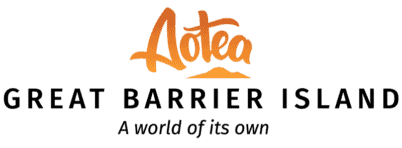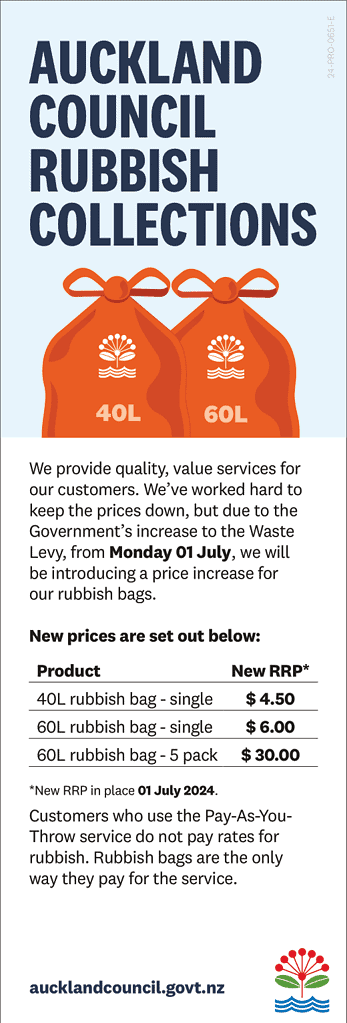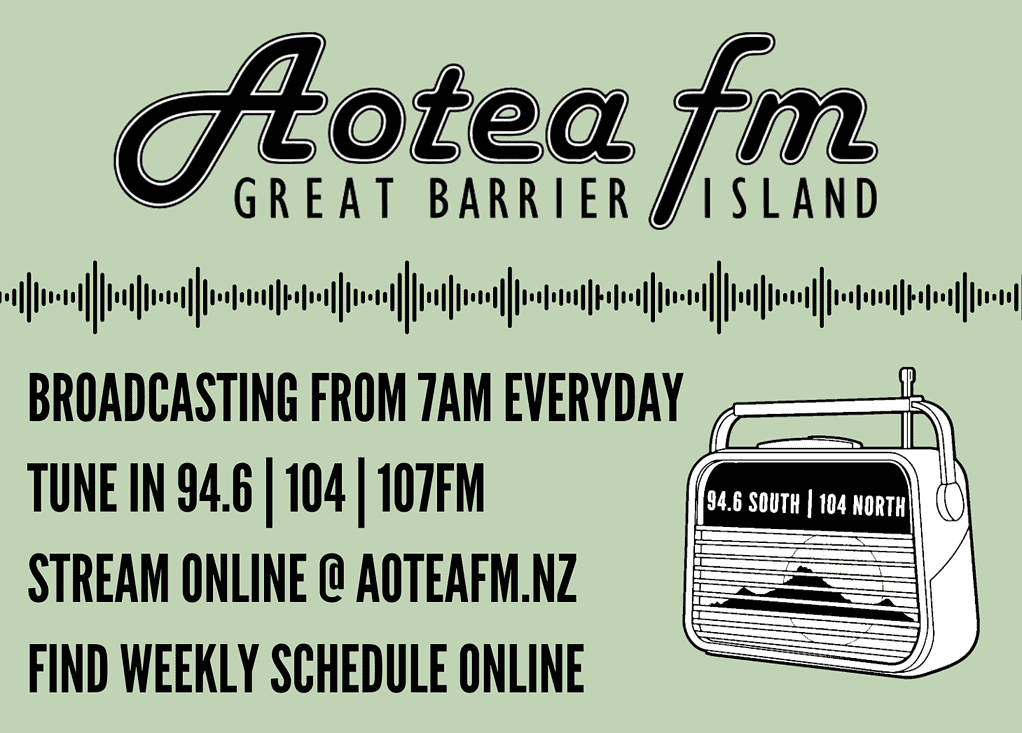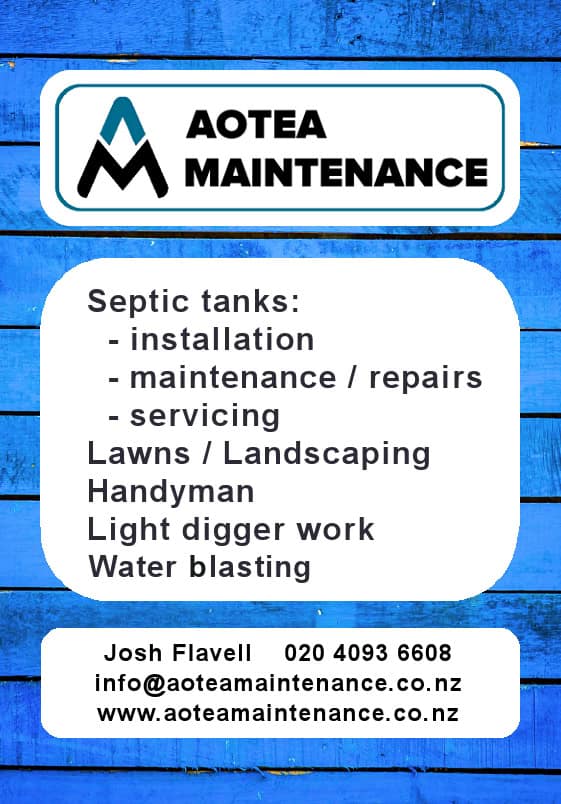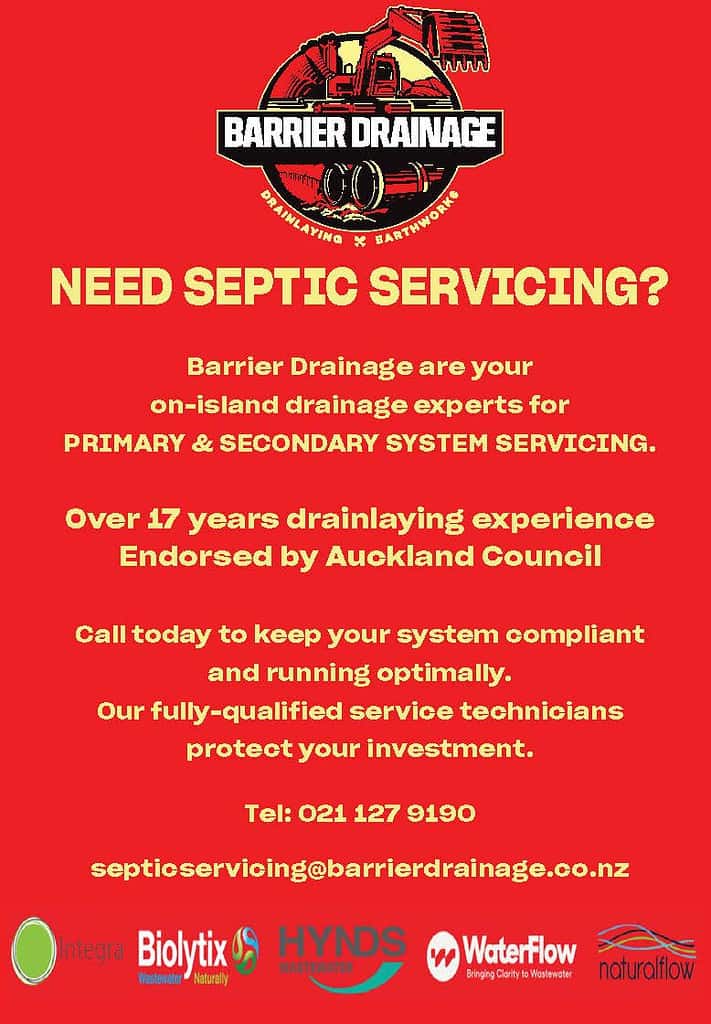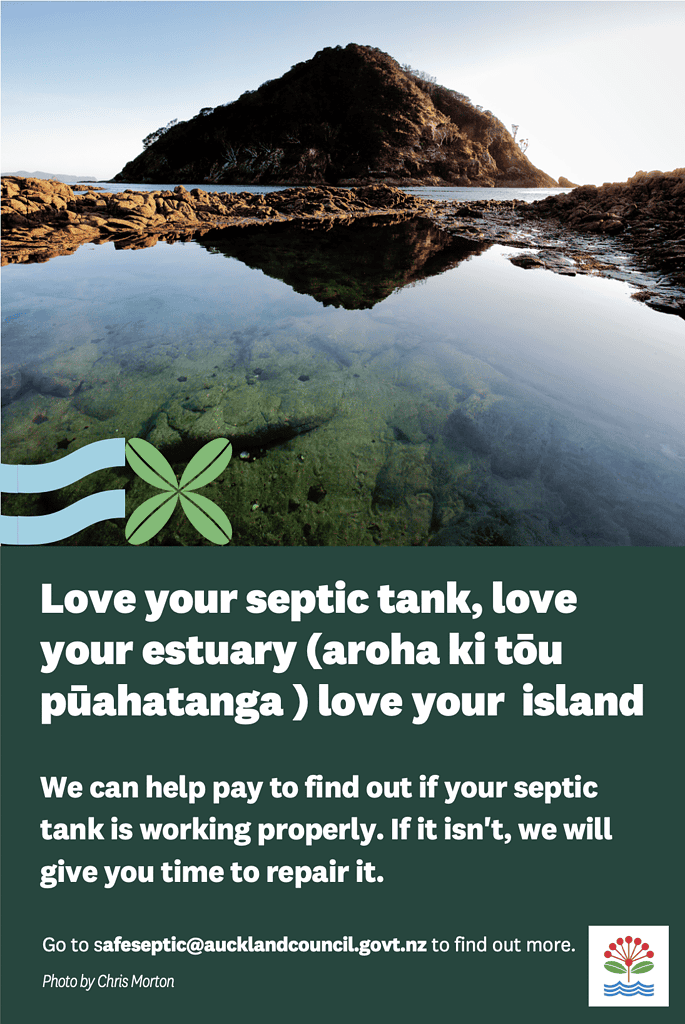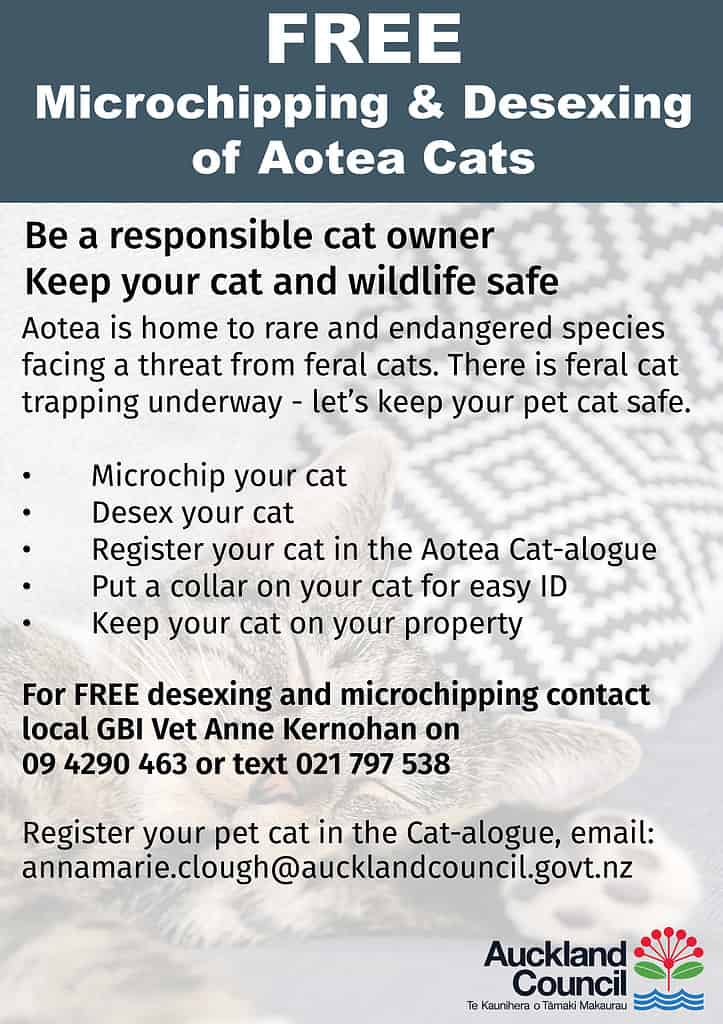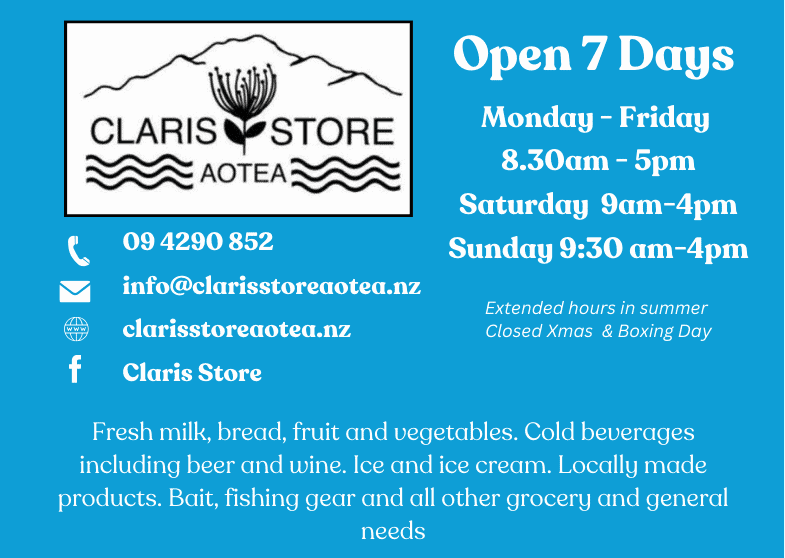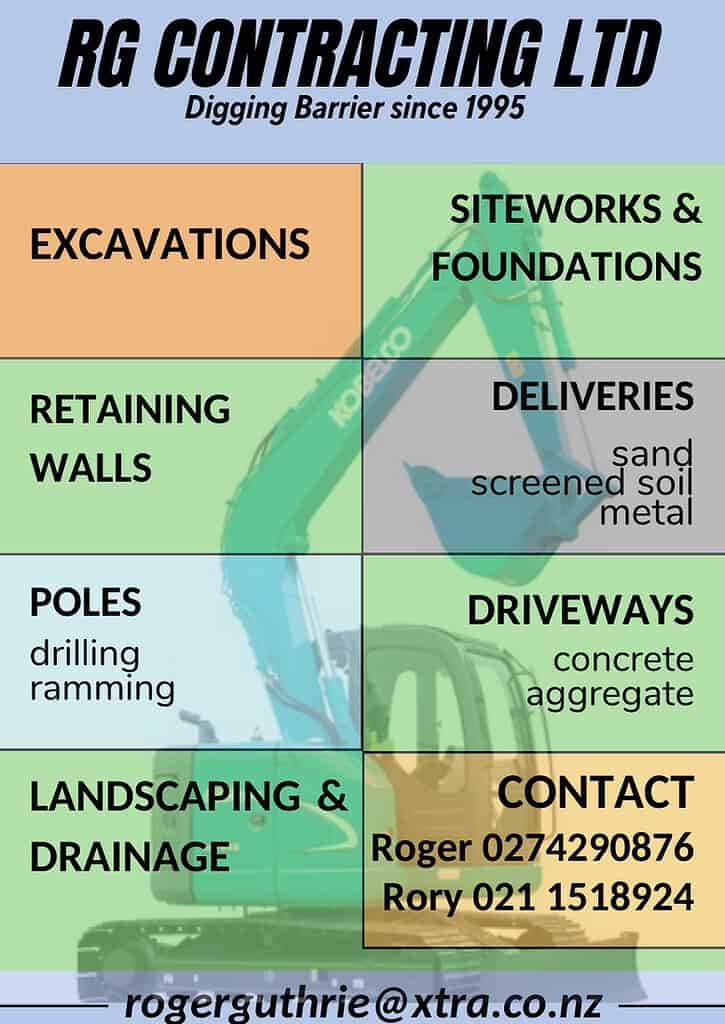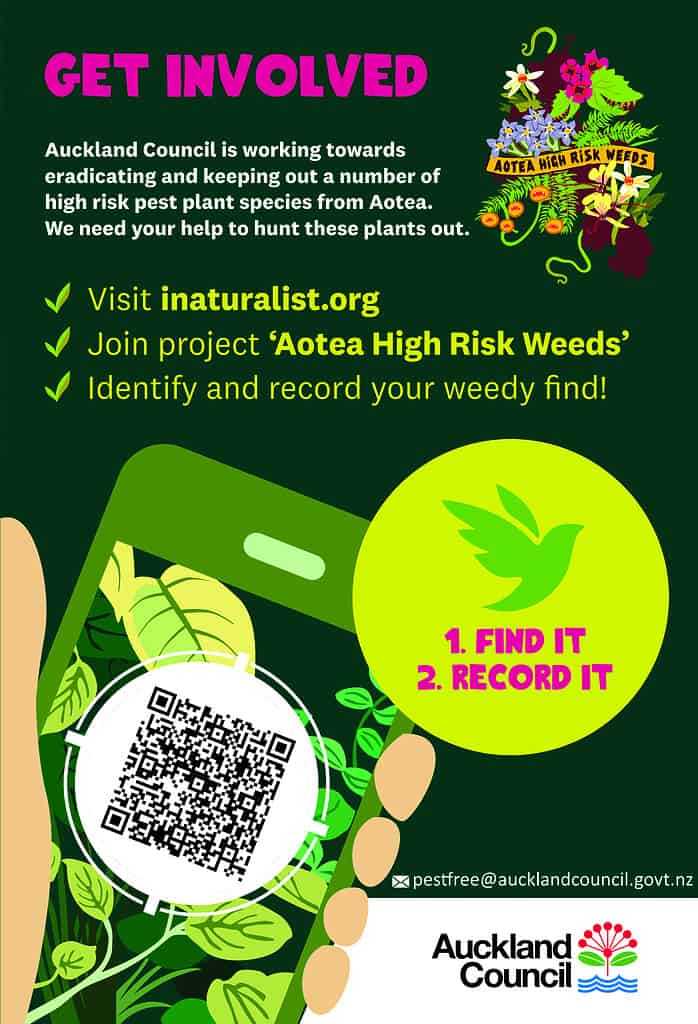AOTEA CAULERPA RESPONSE TEAM SETTING UP FOR LONG TERM CONTROL OPERATIONS
19 June 2024
Exotic caulerpa seaweed arrived in Aotea waters at least three years ago, probably on the anchor of a boat, and its effects have been felt in many ways.
Beachcast caulerpa at Okupu – Sid Wales
Frustrated by a lack of action in the water, a new steering team was established on 3 April this year, to oversee and coordinate the response to caulerpa on Aotea Great Barrier Island. Led by Ngāti Rehua Ngātiwai ki Aotea, the Aotea Caulerpa Response Team (ACRT) wants to stop the spread of exotic Caulerpa around Aotea. It is a point of coordination for the community, Auckland Council, MPI, DOC and other exotic caulerpa sites for the response on Aotea. The steering team is made up of four mana whenua members (Opo Ngawaka, Marilyn Stephens, Ken Ngawaka Fortzer and Fletcher Beazley) and four community members (Izzy Fordham, Chris Ollivier, Kate Waterhouse and Barry Scott) and has its work cut out (www.acrt.co.nz).
On July 3 at 5pm at the Claris Conference Centre, the Aotea Caulerpa Response team is holding a community meeting to share information about the status of the infestation, the government response and our plan to stop the spread.
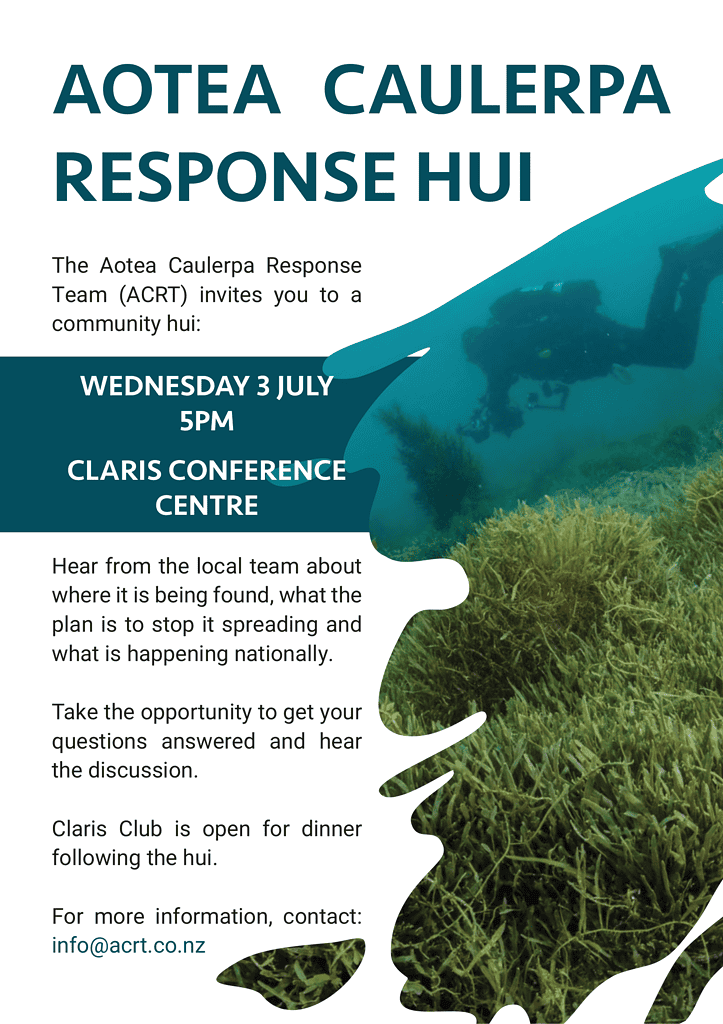
There has been good news and bad news in the two months since the volunteer team started work. More funding has been secured to begin a trial removal project at Whangaparapara, to establish on-island capability in surveillance and removal of caulerpa in the sea. Surveillance has also been stepped up to locate the edges of the infestations, and some suction dredging occurred in Man of War passage in May to stop it getting into Port Fitzroy.
But there is also more exotic caulerpa being found with more eyes in the water. In late April it was identified at the Mokohinau Islands after a University of Auckland dive team conducting fish surveys reported sightings to MPI. A Department of Conservation specialist dive team with local support confirmed the locations of more than 80 small Caulerpa patches.
“It’s critical that we learn from the last 3 years and take the right actions to eliminate these patches as soon as possible,” says Opo Ngawaka, Chair of the Ngāti Rehua Ngātiwai ki Aotea Trust and member of the steering team.
This and subsequent finds at Fantail Bay on the Coromandel, Rakino Island and more recently at Leigh, highlight why it is so important to control the spread of Caulerpa around Aotea, and why the ACRT wants to secure long term funding for an Aotea based operation.
“We need to be able to carry out underwater surveys to detect and confirm caulerpa sites and to treat or remove it once it is found,’ says Chris Ollivier, co-Chair of the group. It is also a priority for the team to keep Port Fitzroy open and to open up both Whangaparapara and Tryphena Harbours by removing Caulerpa from these two bays.
Treatment tools include hand removal for small patches, covering it with light-proof matting/whāriki, and suction dredging to remove it from the sea floor entirely. A large scale dredge is being tested in the Bay of Islands and may be able to be deployed here too. Other tools are still under development and being tested.
The new steering team is co-chaired by Fletcher Beazley and Chris Ollivier. Chris is well known as a member of the Aotea Great Barrier Local Board and operator of fishing charter business Hooked on Barrier. Fletcher is a trustee of Ngāti Rehua Ngātiwai ki Aotea Trust and is joined on the team by trustee Marilyn Stephens and Chair Opo Ngawaka.
Sustained pressure is continuing from community and iwi in all Caulerpa sites for a faster and more comprehensive response from MPI to the risks it poses. Of the $5m in national funding to fight Caulerpa announced in February by the Minister for Biosecurity, Andrew Hoggard, only $200,000 was allocated to Aotea.
”That funding was a drop in the ocean in terms of what we need here to stop this pest,” says Chris. “We need long term support to set up the teams that can do the surveillance and control work day in day out, and protect our coast from its impacts,” he says.
NIWA surveys of 18 sample sites off the west coast of Aotea confirm that the existing infestations are growing. Scallops and crayfish have completely disappeared in the worst caulerpa affected areas. It grows on rocky and sandy substrates and has been reported as deep as 42m. Ahu Moana monitoring at Schooner Bay suggests it doesn’t do well under healthy kelp forests but will quickly take over sandy areas and kina barrens.
Map of all exotic caulerpa sites found on Aotea so far – Auckland Council
Scientist Barry Scott is a member of the ACRT and has been collating all the science available to date (https://www.gbiet.org/caulerpa-response). “It’s like astroturf when it gets away,” he says. He thinks that ocean currents are very likely spreading loose fragments of Caulerpa and “tumbleweeds”, large balls of the seaweed that break loose from the sea floor have been reported. “It’s so important that we find new patches and treat them before they have a chance to form these mats, it’s the only way we’ll stop it spreading,” he says.
Some in the community have already said they think it’s too late and it’s time to throw in the towel on Caulerpa. Others say we just have to learn to live with it.
“We don’t think that is acceptable,” says Chris, and Barry agrees. “Living with it means accepting the loss of inshore scallop beds, shellfish and kōura habitat, and big drops in fish diversity and abundance if overseas data is any indication. Is that really what people want?”
The economic impact of caulerpa has the potential to be very significant for the north of New Zealand and Aotea is feeling the greatest effects. Three years of Caulerpa restrictions has come on top of a lengthy pause in boat-based visitors through the COVID pandemic and the terrible La Niña summer of 2023/24 keeping boaties away from the island. Some local businesses have been hit hard – a message Local Board Chair Izzy Fordham is taking to a new National Caulerpa Advisory Committee.
In response, the Aotea Great Barrier Local Board is working on increasing the number of public moorings available in harbours. The ACRT has worked to source underwater drones (ROVs) and training for local crews in ROV use to spot and map the precise locations of caulerpa beds in those places. Ngāti Rehua Ngātiwai ki Aotea Trust is supporting the training of local divers.
It is worth remembering that Aotea has two species of Caulerpa—the highly invasive and densely growing Caulerpa brachypus, and the less invasive Caulerpa parvifolia, also at Waiheke, Kawau and Ahu Ahu/Great Mercury. Until the discovery at the Mokohinau islands, Omakiwi Cove in the Bay of Islands was the only other location with Caulerpa brachypus.
Caulerpa brachypus is highly invasive and it’s one reason why offers of assistance have been coming in from other iwi, marine scientists and divers. And winter is the time—monitoring suggests that Caulerpa grows more slowly in cooler waters and winter provides a window for control.
”We have to get set up to manage the spread here,” says Chris. “Once you’ve seen what it does to the sea floor you won’t want that in your harbour or bay.”
For more information please contact the Aotea Caulerpa Response Team:
021 470 401
Visit: www.acrt.co.nz for all details and to stay up to date
- Boat owners can help control the spread of Caulerpa by observing the anchoring restrictions (https://www.mpi.govt.nz/biosecurity/exotic-pests-and-diseases-in-new-zealand/pests-and-diseases-under-response/exotic-caulerpa-seaweeds-caulerpa-brachypus-and-caulerpa-parvifolia-in-new-zealand). If you do find Caulerpa on your anchor or fishing gear, following the advice to dispose of it in a securely closed plastic bag to landfill.
- If you think you have seen Caulerpa in the water or you find it washed up on the beach please report it to MPI here: https://report.mpi.govt.nz/pest/
To report a boat anchored inside the restricted area please email info@acrt.co.nz with the location and a photo if possible.
